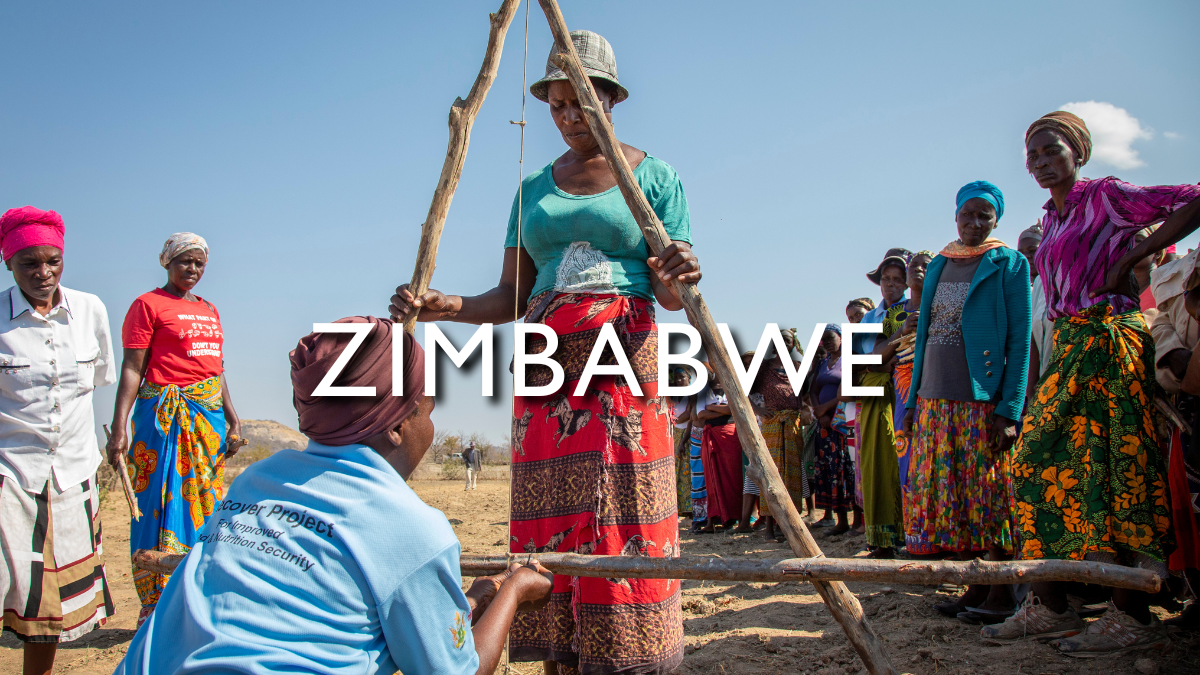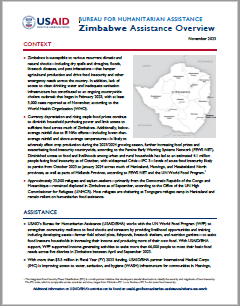
Zimbabwe is susceptible to various recurrent shocks—including floods, livestock diseases, localized drought, and pest infestations—that hamper agricultural production and drive widespread food insecurity and other emergency needs. Volatile macroeconomic conditions have further diminished access to food and livelihoods among households. As a result, approximately 3.8 million people in Zimbabwe—nearly 40 percent of the country's rural population—were expected to require emergency food assistance during the 2022–2023 lean season, when food is most scarce, according to the Zimbabwe Vulnerability Assessment Committee. As of March 2023, the Famine Early Warning Systems Network anticipated that as much as 20 percent of the population—up to 2.5 million people—would require emergency food assistance through September. High levels of food insecurity are also contributing to chronic malnutrition throughout the country, with nearly 25 percent of children ages five years and younger experiencing stunted growth in 2022, according to the UN World Food Program (WFP). In addition, more than 23,000 refugees and asylum seekers, the majority of whom were located at Tongogara refugee camp and reliant on humanitarian food assistance to meet their daily needs, remained displaced in Zimbabwe as of January 2023, according to the UN. On November 17, 2022, U.S. Chargé d'Affaires Elaine M. French issued a redeclaration of humanitarian need due to ongoing food insecurity in Zimbabwe. USAID continues to focus on addressing emergency needs—including food and nutrition needs—resulting from drought and other shocks while also supporting interventions to bolster community resilience to mitigate and respond to future shocks.

